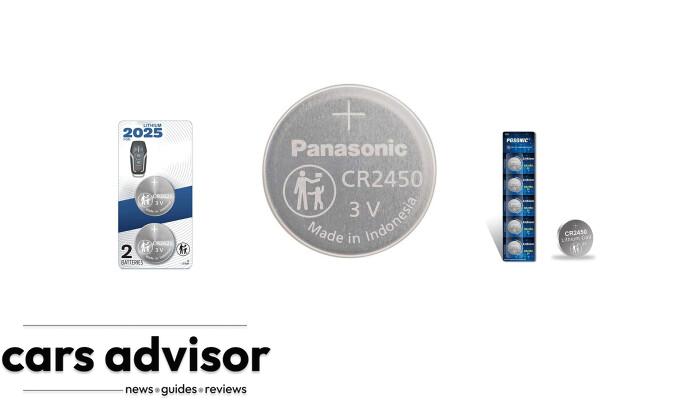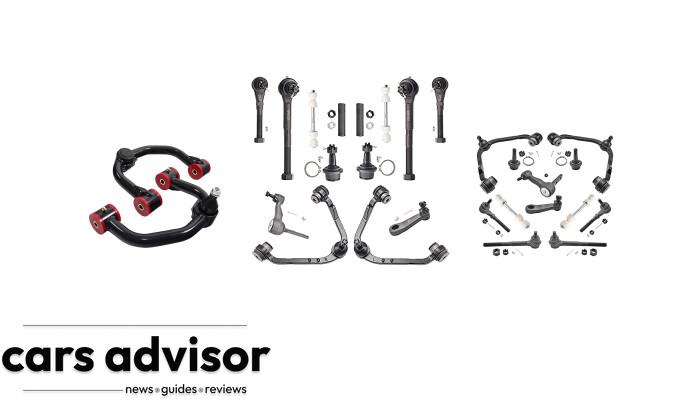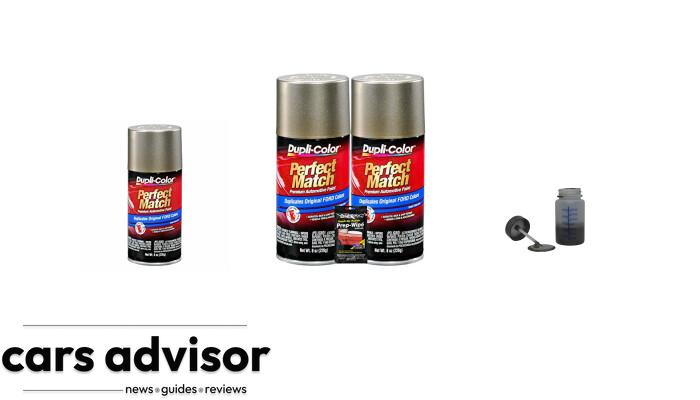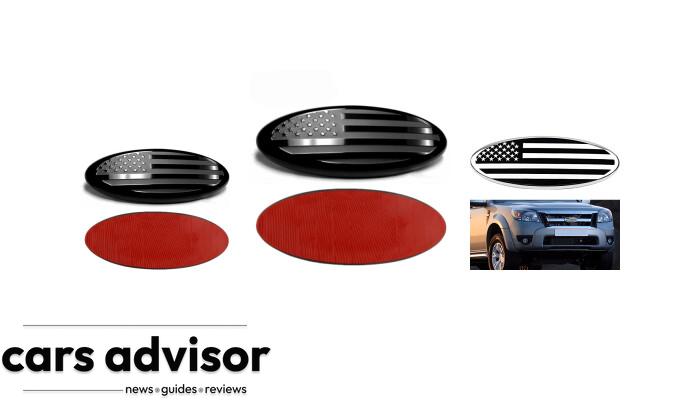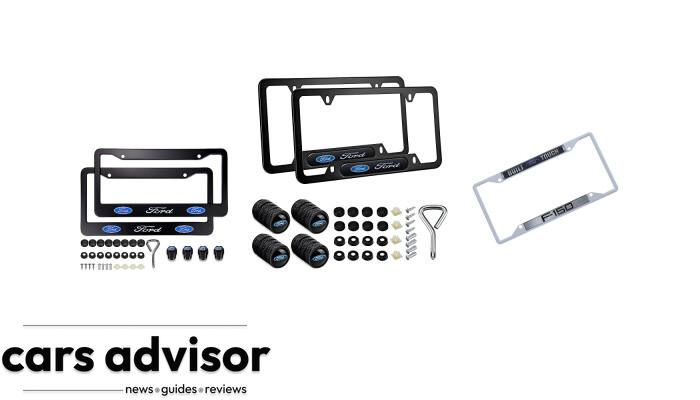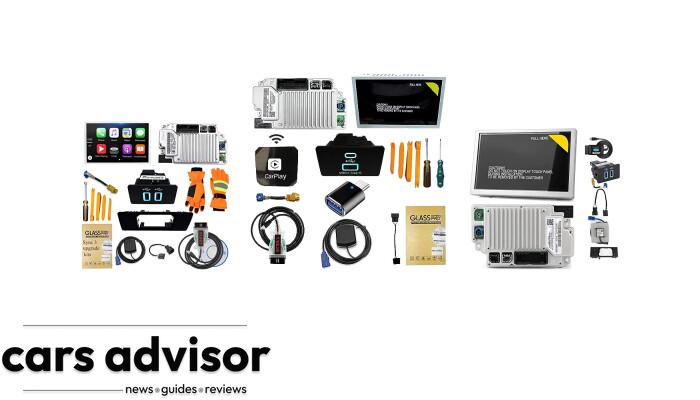Experiencing vibrations in your car while driving can be both unsettling and perplexing, especially when they disappear the moment you shift to neutral. Understanding the root cause of these vibrations is crucial for maintaining your vehicle’s performance, safety, and ensuring a smooth ride.
In this blog post, we’ll explore some common causes of car vibrations in drive but not in neutral, how to diagnose them, ways to fix these issues, and tips on preventing future vibrations. So buckle up and join us as we delve into the world of automotive troubleshooting!
TLDR
1. If a car is vibrating in drive but not in neutral, it could be a sign of transmission, engine, or tire problems.
2. Bad transmission or damaged motor mounts can cause a car to vibrate in drive but not in neutral.
3. Subsiding shaking when a car is in neutral could indicate motor mount issues.
4. Dirty or worn out spark plugs and a faulty fuel intake system can cause engine shuddering.
5. The rotation of the crankshaft, transmission gears, and other moving parts in a car can cause slight vibrations when driving.
6. Bad spark plugs and dirt and carbon deposit build-up can cause a car to vibrate when stopped.
7. Other common causes of car vibration when stopped or idling include issues with the exhaust, suspension, or steering.
8. Regular maintenance and inspection of a car can help prevent and identify vibration issues.
9. Professional opinion and diagnosis can help identify and fix vibration issues in cars.
10. Addressing vibration issues in a car can improve its performance, safety, and overall driving experience.
Understanding Car Vibrations In Drive But Not In Neutral
Car vibrations in drive but not in neutral can be caused by a variety of issues such as uneven tire wear, transmission and engine problems, damaged motor mounts, spark plug misfires or faulty fuel intake systems.
Causes Of Uneven Tire Wear
Uneven tire wear can be a primary cause of car vibrations when in drive, but not in neutral. This issue usually arises from misaligned wheels, unbalanced tires, or improper inflation. When your vehicle’s wheels are misaligned, it can lead to uneven wear on the tires’ edges and eventually create a vibration while you drive. Additionally, improperly balanced tires can result in an uncomfortable shimmy or shake as the vehicle gains speed.
To prevent uneven tire wear and extend their lifespan, it’s essential to follow proper maintenance practices such as routine tire rotations and maintaining appropriate air pressure levels. Regularly checking your alignment is also crucial since misalignments may develop from daily driving conditions like hitting potholes or curbs.
Ignoring these issues could exacerbate vibrations, reduce fuel efficiency, and even compromise your safety on the road due to decreased traction control with worn-out tires. In conclusion, addressing uneven tire wear early on can help mitigate car vibrations during drives while improving overall performance and ride comfort.
Transmission And Engine Issues
Transmission and engine problems can also cause a car to vibrate in drive but not in neutral. Transmission issues may include torque converter problems or drivetrain problems, which can cause vibrations when the vehicle is moving at certain speeds. Additionally, idle speed control or engine misfire may cause vibration, particularly when idling or stopped. Engine shaking could be due to damaged motor mounts or loose belts that are in need of adjustment or replacement.
It’s important to address these types of issues as they can reduce the overall performance and safety of your vehicle. If you notice unusual vibrations while driving, it’s best to seek professional opinion from a qualified auto mechanic who specializes in automotive diagnostics.
They will be able to diagnose the specific problem more accurately and recommend appropriate solutions such as replacing faulty parts like spark plugs, addressing transmission issues properly, repairing broken motor mounts or adjusting belts for smooth operation among others. By fixing these issues early on with proper maintenance and inspection techniques mentioned earlier you can prevent further wear-and-tear on your car and ensure safe travels for yourself and passengers alike!
Damaged Motor Mounts
Motor mounts, also known as engine mounts, are components that secure the engine to the chassis of the car. When these mounts wear out or become damaged, they can cause vibrations in the car. If a motor mount is broken or loose, it will allow the engine to move around and create excessive vibration when driving.
Motor mount issues can be identified by performing a visual inspection under the hood. Signs of damaged motor mounts include cracks or tears in the rubber portion of the mount and excess movement of the engine when idling. In severe cases, broken motor mounts may cause loud banging noises when shifting gears or accelerating.
Replacing damaged motor mounts is essential to address car vibrations in drive but not in neutral. This repair should be done by a professional mechanic as it involves manipulating sensitive parts of your car’s overall assembly. Failing to replace worn-out or broken motor mount can lead to more pricey problems like vibrating engines and wrong alignment among others.
Spark Plug Problems
Spark plug problems can also be a cause of car vibrations in drive but not in neutral. Dirty or worn-out spark plugs can cause misfiring, which leads to engine shaking, and ultimately, vibration. Replacing the spark plugs is usually an easy fix to this problem. Spark plugs generally need replacing every 30,000-50,000 miles.
It’s essential to ensure that the correct type of spark plug is used for your vehicle. Using the wrong size can lead to issues with idling and acceleration. Additionally, if you’re experiencing vibration when stopped or idling, it may be due to bad spark plugs or dirt and carbon deposit build-up on them. A professional automotive technician can clean or replace these as necessary during regular maintenance checks.
Regularly maintaining your vehicle’s fuel system by changing filters and using high-quality fuel additives can prevent debris buildup around the spark plugs and improve their performance over time. Addressing these issues promptly will keep your car running smoothly while improving its safety on the road.
Fuel Intake System Issues
Fuel intake system issues can cause a car to vibrate when driving. A faulty fuel pump, clogged fuel filter, or dirty injectors can affect the flow of fuel into the engine and cause it to run rough. The engine may also hesitate or sputter during acceleration. Using low-quality gasoline or contaminated fuel can also lead to problems with the fuel intake system.
Regular maintenance of the vehicle’s fuel system can prevent these issues from occurring. It is important to replace the fuel filter on schedule and use high-quality gasoline from reputable gas stations. If there are signs of trouble with the fuel intake system, such as rough idling or difficulty starting, it is best to have a professional mechanic diagnose and fix the issue promptly before it leads to further damage in other parts of the vehicle. Don’t ignore concerns about your car’s vibration – address them quickly for optimal performance and safety when driving on any road conditions!
Diagnosing Car Vibrations
To diagnose car vibrations, visually inspect the tires for uneven wear, check the transmission fluid level and condition, inspect motor mounts for damage or wear, test spark plugs for proper functioning, and inspect the fuel intake system for any problems.
Visually Inspecting Tires
To diagnose vibration issues in a car, it’s essential to visually inspect the tires. Here are some steps to follow:
- Start by checking the tire pressure using a reliable gauge. Underinflated or overinflated tires can cause vibrations, uneven wear, and other problems.
- Inspect the tire tread depth and condition for signs of wear, bulges, cuts, or punctures. Uneven tire wear can cause shaking when driving and indicate alignment or suspension issues.
- Check for wheel damage or warpage that could cause imbalance or vibrations at higher speeds.
- Ensure that all lug nuts are tightened to their proper torque specifications and that tires are securely mounted on their rims.
- If your car has directional tires, make sure that they are mounted correctly and rotating in the right direction.
By visually inspecting your car’s tires regularly, you can catch early signs of wear and tear before they lead to more significant problems like vibration issues while driving.
Checking Transmission Fluid
To diagnose a car that vibrates in drive but not in neutral, it’s important to inspect the transmission fluid. Follow these steps to check transmission fluid:
- Make sure the car is on level ground and the engine is fully warmed up.
- Locate the transmission dipstick, usually located near the back of the engine.
- Pull out the dipstick and wipe it clean with a rag or paper towel.
- Reinsert the dipstick all the way in and pull it out again.
- Check the level and color of the fluid on the dipstick. The fluid level should be within the “full” marks on the dipstick, and the color should be clear or red (depending on your car’s make and model).
- If the fluid is low, add more automatic transmission fluid (ATF) as recommended by your owner’s manual.
- If the fluid looks dirty or smells burnt, it may be time for a transmission flush or to have a mechanic inspect for possible underlying issues with your car.
Checking transmission fluid can help identify issues related to wear and tear or lack of maintenance such as low ATF levels or burnt fluids causing vibration issues in cars. Proper maintenance including checking ATF levels can go a long way in preventing vibration issues from occurring in vehicles as well as avoid potential damage to transmissions that can be very costly to repair.
Inspecting Motor Mounts
Inspecting the motor mounts of a car is crucial in diagnosing vibration issues. Here are the steps to follow in inspecting motor mounts:
- Turn off the engine and locate the motor mounts.
- Use a flashlight to visually inspect the motor mounts for any signs of cracks, tears or worn-out rubber.
- Check for any missing bolts or damaged mounting hardware.
- Perform a torque test on each mount by pushing and pulling on them to check for looseness or excessive movement.
- If there is excessive movement, replace the motor mounts with new ones.
Worn out or broken motor mounts could cause the engine to vibrate excessively, leading to vibration issues in drive but not in neutral. It is imperative to have these inspected regularly during routine maintenance checks by a professional mechanic to ensure optimal vehicle performance and safety while driving.
Testing Spark Plugs
Testing spark plugs is a crucial step in diagnosing car vibration issues. Here are some steps to test the spark plugs:
- Remove the spark plug wires and visual inspection of each spark plug for signs of wear, fouling, or damage.
- Use a spark plug tester to check for the presence of a spark when the engine is running. If there is no spark, it may indicate faulty ignition coils or control module.
- Check the gap between the two electrodes on each spark plug using a feeler gauge. The gap should be within manufacturer’s specifications; adjust if required.
- Use an ohmmeter to test the resistance of each spark plug wire. High resistance can indicate worn-out wires that need to be replaced.
- Replace any damaged or worn out spark plugs with new ones.
Testing and replacing faulty spark plugs can often fix engine shuddering and improve overall performance. It’s important to follow manufacturer recommendations for proper maintenance and replacement of spark plugs in order to prevent car vibration issues due to worn-out parts.
Inspecting Fuel Intake System
One of the possible causes of car vibrations is a faulty fuel intake system. Here are the steps to inspect it:
- Check fuel pressure: Use a fuel pressure gauge to check if the fuel pump is delivering enough pressure to the engine.
- Inspect the fuel filter: A clogged fuel filter can cause a drop in performance and vibrations. Check for dirt or debris in the filter and replace it if necessary.
- Inspect throttle body and air intake: A dirty or clogged throttle body or air intake can cause poor engine performance and increased vibration. Clean them thoroughly using an appropriate cleaner.
- Check for vacuum leaks: Leaks in the vacuum lines can disrupt proper air/fuel ratio, which may be causing your vibration issue. Inspect all vacuum lines carefully, repair or replace any that have cracks or holes.
- Test fuel injectors: If there’s a problem with the injectors, they may not be providing enough fuel to the engine smoothly causing vibrations & shaking on acceleration, jerking while driving/slowing down, misfires at idle speed, etc. Have them tested by an expert mechanic.
By performing these steps accurately, you will be able to identify if something is wrong with your car’s fuel injection system and take necessary action before it leads to bigger & expensive problems like stalling or no-start condition, erratic idling/shaking at any speed and compromising drivability, etc.
How To Fix Car Vibrations In Drive But Not In Neutral
To fix car vibrations in drive but not in neutral, you can replace worn tires, repair or replace the transmission, replace damaged motor mounts, clean or replace spark plugs, and repair or replace the fuel intake system.
Replacing Worn Tires
Replacing worn tires is one way to address car vibrations in drive but not in neutral. Here are the steps to follow:
- Inspect tires for uneven wear patterns, bulges, or cracks.
- Choose high-quality replacement tires that match the size and specifications of the previous ones.
- Install new tires following proper mounting and balancing procedures.
- Test drive the car to ensure that the vibration has subsided.
Regular tire rotation and proper inflation can also help prevent tire wear and vibration issues. Keeping track of mileage and replacing tires as recommended by the manufacturer can also improve vehicle safety and performance.
Repairing Or Replacing Transmission
If the car’s vibration is caused by a faulty transmission, it’s crucial to address the issue quickly to avoid further damage. Here are some ways to repair or replace a problematic transmission:
- Check and Refill Transmission Fluid: Low levels of transmission fluid can cause vibrations, so start by checking and refilling the fluid level as needed.
- Transmission Filter Replacement: A clogged transmission filter can prevent proper fluid flow and cause vibrations. Replacing the filter can solve this issue.
- Transmission Repair: If the problem lies with damaged parts inside the transmission, such as worn-out gears, clutches or seals, a skilled mechanic will need to perform repairs.
- Transmission Replacement: In some cases, a complete transmission replacement may be necessary if repair isn’t possible or cost-effective.
- Software Updates: Modern cars come with computer-controlled transmissions that may require software updates from time to time. Updating your car’s software can often fix any issues with irregular gear shifts that could cause vibrations.
It’s important to note that diagnosing transmission issues can be tricky and requires professional expertise in automotive diagnostics. In case of doubt or difficulty, consult a qualified auto technician for an accurate diagnosis and repair recommendations tailored for your car’s specific needs.
Replacing Damaged Motor Mounts
If your car is vibrating in drive but not neutral, damaged motor mounts could be the culprit. Here are the steps to replace them:
- First, locate the motor mounts under the hood of your car.
- Use a jack to lift the engine just enough to take some pressure off the mounts.
- Remove any bolts or screws securing the old mounts in place and gently pry them out.
- Place the new motor mounts in their proper location and secure them with bolts or screws.
- Lower the engine back into position using your jack and remove it from under your car.
By replacing damaged motor mounts, you can reduce vibrations while driving and improve your car’s overall performance and safety.
Cleaning Or Replacing Spark Plugs
Dirty or worn out spark plugs can cause engine shuddering and vibrations in a car. To fix this issue, you may need to clean or replace the spark plugs. Here are the steps to do it:
- Identify the location of the spark plugs.
- Disconnect the battery to avoid electric shock while working on the plugs.
- Remove the wires connecting each plug to the ignition system.
- Use a spark plug socket and ratchet wrench to loosen and remove each spark plug from the engine block.
- Inspect them for wear, damage or debris accumulation.
- Clean them using a wire brush, sandpaper or specialized cleaning solvent for stubborn dirt adhered to them.
- Replace damaged or excessively worn out spark plugs with new ones that are compatible with your car’s make and model.
- Reconnect all wires firmly in their correct order and reinstall any engine components that were removed during removal of these parts.
Cleaning or replacing spark plugs can prevent engine misfires, improve fuel efficiency and reduce emissions in some cases too, making it an important part of regular vehicle maintenance.
Repairing Or Replacing Fuel Intake System
The fuel intake system is responsible for delivering fuel to the engine. If there are issues with this system, it can cause the car to vibrate in drive but not in neutral. Here are some steps for repairing or replacing the fuel intake system:
- Inspect the fuel supply line and filter for any damage or clogs.
- If the filter is dirty or clogged, replace it with a new one.
- Check the fuel pump for proper function and replace if necessary.
- Clean out any carbon buildup in the throttle body to improve airflow.
- Inspect the vacuum hoses connected to the intake manifold and replace if damaged.
- Look at the air intake ducts and ensure there are no leaks or cracks in them.
- Replace any faulty sensors that could be affecting fuel delivery.
By addressing issues with the fuel intake system, drivers can prevent engine shuddering and vibrations while driving. It’s important to stay on top of regular maintenance to avoid these problems from occurring in the first place.
Tips For Preventing Car Vibrations
To prevent car vibrations, it is important to maintain and inspect your vehicle regularly, ensure proper tire inflation and rotation, balance and align wheels, use high-quality fuel and lubricants, and avoid overloading the vehicle beyond its recommended capacity.
Regular Maintenance And Inspections
Regular maintenance and inspections are essential for preventing car vibrations and identifying issues before they become more severe. Here are some important steps to take:
- Change the oil and oil filter every 3,000 to 5,000 miles or according to the manufacturer’s recommendation.
- Replace air filters regularly to prevent dirt and debris from clogging the engine.
- Check tire pressure and rotate tires regularly to ensure even wear.
- Have wheel alignment and tire balancing checked annually or as recommended by your mechanic.
- Inspect brake pads, rotors, and calipers regularly to ensure proper function.
- Test battery voltage levels and replace if needed.
- Check all fluids including transmission fluid, coolant, power steering fluid, and brake fluid regularly.
- Inspect belts and hoses for cracks or signs of wear.
By following a regular maintenance schedule, you can reduce the likelihood of vibration issues occurring in your car while also improving its overall performance and lifespan.
Proper Tire Inflation And Rotation
Proper tire inflation and rotation are essential for maintaining a smooth ride in your car. Here’s what you need to know:
- Check the recommended air pressure for your tires regularly and keep them properly inflated. Underinflated or overinflated tires can cause uneven wear and vibrations while driving.
- Rotate your tires every 5,000-8,000 miles to promote even wear across all four tires. This helps to prevent vibration issues caused by unevenly worn out tires.
- Make sure that your wheels are balanced after rotating your tires. Unbalanced wheels can also cause vibrations while driving.
- Use high-quality tires that are appropriate for the weather conditions in which you drive. These can help to reduce road noise, vibrations, and other issues caused by poor quality tires.
- Avoid overloading your car beyond its recommended weight limit as this can put pressure on the tires and cause premature wear and tear.
By following these tips, you can ensure that your tires are properly maintained and reduce the chances of experiencing vibrations when driving your car.
Balanced And Aligned Wheels
To address car vibrations in drive but not in neutral, it’s important to ensure that the wheels are properly balanced and aligned. Here are some things to keep in mind:
- Balanced wheels: Unbalanced wheels can cause vibrations at any speed, so it’s important to have them balanced regularly. This involves adding weights to the rim of the wheel to compensate for any imbalances. A professional mechanic can perform this service.
- Wheel alignment: Misaligned wheels can also cause vibrations, as well as uneven tire wear and handling issues. To check wheel alignment, a mechanic will measure various angles and adjust them as needed using special equipment. It’s recommended to have your wheel alignment checked once a year or whenever new tires are installed.
- Proper tire inflation: In addition to balancing and alignment, ensuring proper tire inflation is crucial for preventing vibrations and promoting even wear. Check your tire pressure regularly and maintain it at the level recommended by your vehicle manufacturer.
- Tire rotation: Rotating your tires every 5,000-8,000 miles can help prevent uneven wear and prolong their lifespan.
- Avoid hitting curbs or potholes: Hitting obstacles on the road can throw off wheel balance and alignment, so try to avoid them when possible.
By keeping your wheels balanced and aligned, you can reduce the risk of car vibrations and enjoy a smoother ride overall.
Use High-Quality Fuel And Lubricants
Using high-quality fuel and lubricants in your car can prevent several vibration issues. Here is why:
- High-quality fuel contains fewer impurities that can cause deposits and buildup in the engine, leading to rough idling and shuddering when driving.
- Good quality lubricants keep the engine parts well-lubricated, reducing friction and wear that can cause vibrations.
- Using premium gasoline with higher octane ratings can reduce engine knocking, which can cause shaking and vibrating while driving.
- High-quality transmission fluids help improve the transmission’s performance, preventing vibrations caused by slipping gears or low fluid levels.
By using high-quality fuel and lubricants, you not only reduce the risk of vibration issues but also promote your car’s longevity. While they may be a bit more expensive than their lower-priced counterparts, investing in good fuel and lubricants is worth it in the long run for a smoother, more reliable ride.
Avoid Overloading The Vehicle
Overloading your car can cause a range of issues, including increased wear and tear on tires and suspension components, reduced braking ability, decreased fuel efficiency, and even structural damage. It’s important to follow the manufacturer’s recommended weight limits for your vehicle as well as any weight restrictions posted on bridges or roads.
For example, if you’re planning a road trip with family or friends, make sure you don’t load the trunk with too much luggage or pack heavy items on the roof rack. Consider renting a trailer if necessary. And if you use your car for work purposes, avoid overloading it with tools or equipment that exceed its capacity.
Avoiding overloading your car not only ensures safer driving conditions but also helps prolong the lifespan of your vehicle. Keeping an eye on total weight will allow for more controlled operation when driving at higher speeds and prevent potential accidents caused by excess strain upon brakes over long periods.
Conclusion
In conclusion, experiencing car vibrations in drive but not in neutral is never a pleasant experience for any driver. However, it’s crucial to identify the underlying cause of the problem and fix it as soon as possible to avoid further damage or potential safety hazards.
Whether it’s due to tire wear, transmission issues, or motor mount problems, there are various ways to diagnose and solve this issue with your car. Regular maintenance inspections can also help prevent vibration problems from occurring in the first place.
Remember that professional opinion and diagnosis can make all the difference when dealing with intricate automotive diagnostics. By addressing vibration issues promptly and effectively, you’ll be able to enjoy a smoother ride on the road while ensuring optimal performance and safety of your vehicle!








